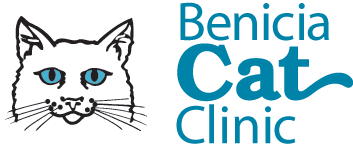Educational Articles
-
Frunevetmab is a formulation of feline anti-nerve growth factor antibodies used to control osteoarthritis pain in cats. This medication is given by an injection under the skin, usually at the veterinary clinic. Side effects may include vomiting, diarrhea, appetite loss, itching, scabbing and hair loss on the head and neck, and pain at the injection site. Call your veterinary office immediately if you suspect an overdose or an adverse reaction to the medication.
-
Gastritis refers to inflammation of the lining of the stomach and is associated with a number of causes and underlying conditions. The most common clinical signs associated with gastritis are sudden vomiting and decreased appetite. Acute gastritis is typically self-limiting and of short (less than 24 hours) duration. The cause is normally not discovered because the clinical signs usually resolve before diagnostic testing is performed. In chronic cases, more involved testing will be undertaken to determine the exact cause of the cat's vomiting.
-
Gastroenteritis is inflammation of the gastrointestinal tract (the stomach and intestines). It can be caused by infection with bacteria, viruses, parasites, medications, or even new foods. The condition often causes abdominal pain, diarrhea, vomiting, and other clinical signs. The principal treatment of gastroenteritis consists of rehydration and restoring blood electrolyte balance
-
Gastrointestinal endoscopy uses a flexible tube with a camera or viewing port to inspect the esophagus, stomach, proximal small intestine, or colon for evidence of disease-causing clinical signs characteristic of gastrointestinal disease. Foreign bodies can often be retrieved. Biopsies are taken of abnormal and normal tissue, as not all conditions cause gross changes to the stomach or intestinal surface. The endoscope cannot reach all areas of the small intestine, so other tests may be needed to diagnose disease in this area. Endoscopic pinch biopsies are not full thickness so if diagnosis is not achieved with endoscopic biopsies, additional testing including surgical biopsies may be needed. 12-18 hours fasting and enemas are required prior to endoscopy depending on the area being studied.
-
Gastrostomy tubes are placed percutaneously through the skin directly into the stomach and may be needed for cats who are unable to chew or swallow their food, or for cats with diseases causing anorexia. Special liquid diets or canned diets blended with water are recommended to be given in multiple feedings throughout the day, dependent on the cat’s reason for the tube. Instructions are provided by your veterinarian for tube feeding and tube maintenance. The tube can be removed as early as 14 days after placement once the cat is eating well. Your veterinarian will remove the tube.
-
Genetic (DNA) testing is readily available, whether you are using it for fun to find out what breeds your pet is made up of or if you are looking into possible medical conditions. DNA samples can be collected either from a cheek swab or a blood draw. Knowing which breeds your pet is made up of can help you and your veterinarian prevent or prepare for health issues in the future.
-
Deoxyribonucleic acid (DNA) is a long molecule that contains an animal’s entire genetic code. DNA is primarily located within the nucleus of each cell. In the nucleus, enzymes transcribe the DNA bases into a substance called RNA (ribonucleic acid), which serves as a messenger, taking the DNA message out into the cytoplasm of the cell where the RNA is translated into proteins. These proteins are responsible for a number of functions in the cell and throughout the body, primarily by acting as enzymes that regulate various cell reactions. DNA tests allow us to examine an animal’s DNA in order to see whether they carry certain genetic diseases. DNA testing can also be used to determine the ancestry of an animal.
-
The easiest way to give your cat liquid medication is to mix it in with some canned food. In some cases, this is not possible, and you will have to administer the medication directly into the cat's mouth using a syringe. Before starting, make sure you prepare the syringe with the correct amount of medication. If the medication was refrigerated, you may want to warm it up by holding the syringe tightly in your hand for a minute or two. It may be helpful to have someone assist you the first few times you administer the medication. Try wrapping your cat in a blanket or towel with only its head exposed. Detailed directions for administering the medication are provided in this handout. Make sure you give your cat plenty of praise throughout the procedure and offer a special treat after giving the medication.
-
Giving pills to cats can be a challenge, even for the most experienced veterinarian! The easiest way to give your cat a pill is to hide the pill in food. Some cats will always find the pill and spit it out, so you may need to administer it directly into your cat's mouth. This handout provides a step-by-step guide to do this, along with some other options if it is still too difficult.
-
Glomerulonephritis is an inflammatory condition of one part of the kidneys (glomeruli) that results in excessive urinary protein loss and kidney damage and can cause many life-threatening conditions, including thromboembolic disease. There are many causes though most of the time, no specific cause is identified. Diagnosis involves blood work, repeated urine tests, imaging, blood pressure, and kidney biopsy. Treatments and prognosis are also described in this handout.

